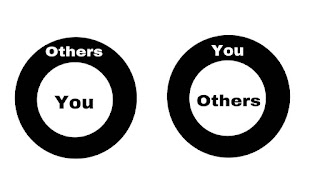The Horrors of the Blue Whale Challenge
Irkutsk Oblast, Siberia: Yulia (15) and Veronika (16) are currently sitting in front of their computers.Yulia sees the date on the lower right corner of her computer. Sunday, 26th February 2017. The day has arrived. After 50 days of anticipation, it has finally arrived. Yulia and Veronika's fingers tremble as they click "accept" on the screen with their wrists slit and covered in dried blood. If you look closely, you'll see the angry gashes along their pale white skin. The incisions representing a whale.
Yulia goes onto VK and types in her last message - "End."
Veronika does the same and writes her last message as "Sense is lost... End."
Both of them decide to meet outside a 14-storey apartment building close to their homes. With a sense of finality, they plunge simultaneously to their death from the roof of the same building.
In 2013, more than 100 teens committed suicide in Russia and the government authorities were rendered clueless about these episodes. No one knew it was only the beginning of hysteria on a large scale. All the cases seemed to have been using VKontakte (popularly known as VK), a Russian-based social networking service which is apparently the 6th most popular website in the world (according to SimilarWeb). While the world faced this trial of mass teenage suicides only roughly starting from the month of May 2016, it made its debut in Russia almost 4 years back.
Yes, I'm talking about the infamous Blue Whale Game/Challenge. The very 21st-century social networking phenomenon which consists of a series of tasks assigned to players by administrators for a 50-day period, with the final challenge requiring the player to commit suicide. The game has proliferated and spread across the globe.
Moving on, in November 2016, 21-year-old Filipp Budeikin was arrested on suspicion of organising a suicide group. The investigation into 130 suicide cases in Russia began only this year when the authorities formed a concrete image of what they were dealing with. It was only in May 2017 that the Russian Duma passed a bill introducing criminal responsibility for creating pro-suicide groups on social media and in June 2017, President Vladimir Putin signed a law imposing criminal penalties for inducing minors to suicide (TASS, June 7 2017).
Adding to that, India saw its first case in Mumbai this year. On 27th October 2017, the Supreme Court decided to hear a plea to ban the deadly game. It asked the government to get back to it within three weeks with a plan to ban the game. The court also directed state-run broadcaster Doordarshan and private TV channels to use prime time slots to spread awareness about the deadly game.
How is the game carried out? It begins with simple tasks like drawing a whale on a paper and gradually moves onto more serious ones like carving it on their skin. Common assignments include self-harm, watching horror movies throughout the day, waking up at 4:20 am, spending the night at a graveyard, listening to 'dark songs', etc. To maintain credibility and proof, participants are expected to share photos of the challenges/tasks completed by them.

(a common sight of the arm of a player)
But what makes the game so susceptible to teenagers in particular? Online is a medium used by billions of teens worldwide and anonymity increases the chances of experimentation by people who can organise such suicide groups. Also, a teenager's mind is easier to transform according to one's wishes, easier to manipulate. The administrator of the game feeds at the insecurities of the intangible thinking of teenagers and provides them with a way out, a quick fix to their problems. Such games that dare you with tasks offers a boost to self-esteem. The adrenaline rush makes them forget of the cost that their life has to pay.
The three most common ways of preventing suicides can be -
1. To look at the warning signs. If he/she has attempted suicide before, experienced death of a family member or someone close, had a chronic illness, or been bullied or abused, etc. are serious signs.
2. To enhance self-esteem - spending time with family/friends, doing something they feel happy doing, etc.
3. To get engaged in real-time activities rather than virtual, online pleasures.
It is no doubt that technology makes people's life easy but now it is making people's death also easy. People's lives have already become short due to chosen lifestyles and games like these are making them shorter. Even if they find a solution to this problem there won't be much time before another such game is created which will be even more dangerous than the Blue Whale.
The three most common ways of preventing suicides can be -
1. To look at the warning signs. If he/she has attempted suicide before, experienced death of a family member or someone close, had a chronic illness, or been bullied or abused, etc. are serious signs.
2. To enhance self-esteem - spending time with family/friends, doing something they feel happy doing, etc.
3. To get engaged in real-time activities rather than virtual, online pleasures.
It is no doubt that technology makes people's life easy but now it is making people's death also easy. People's lives have already become short due to chosen lifestyles and games like these are making them shorter. Even if they find a solution to this problem there won't be much time before another such game is created which will be even more dangerous than the Blue Whale.

Niacee 👍👍
ReplyDelete